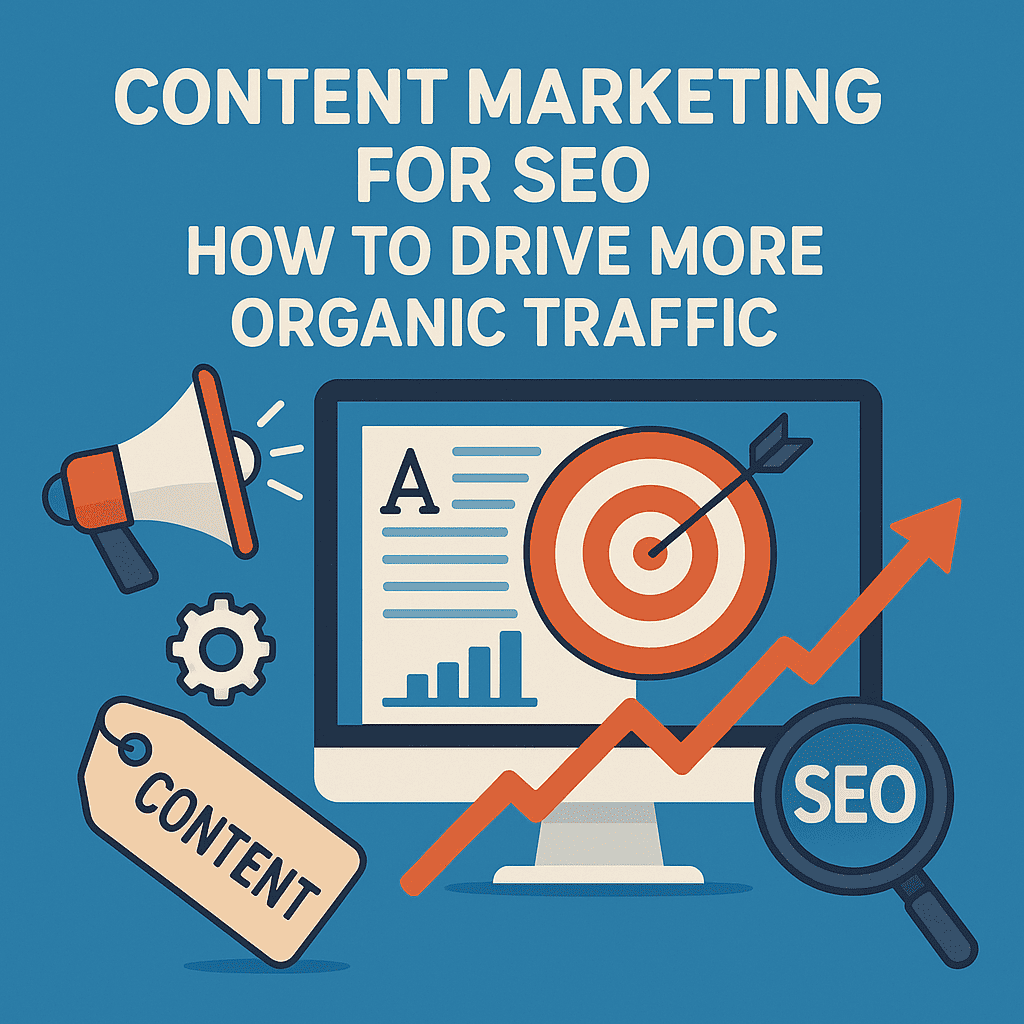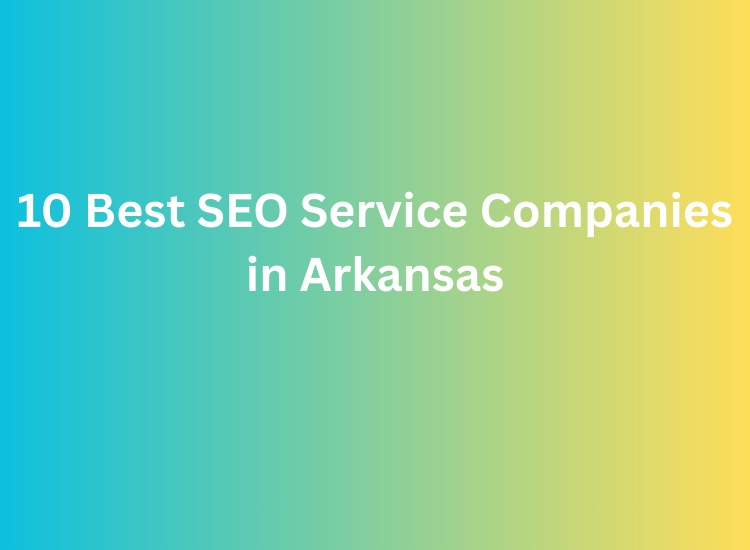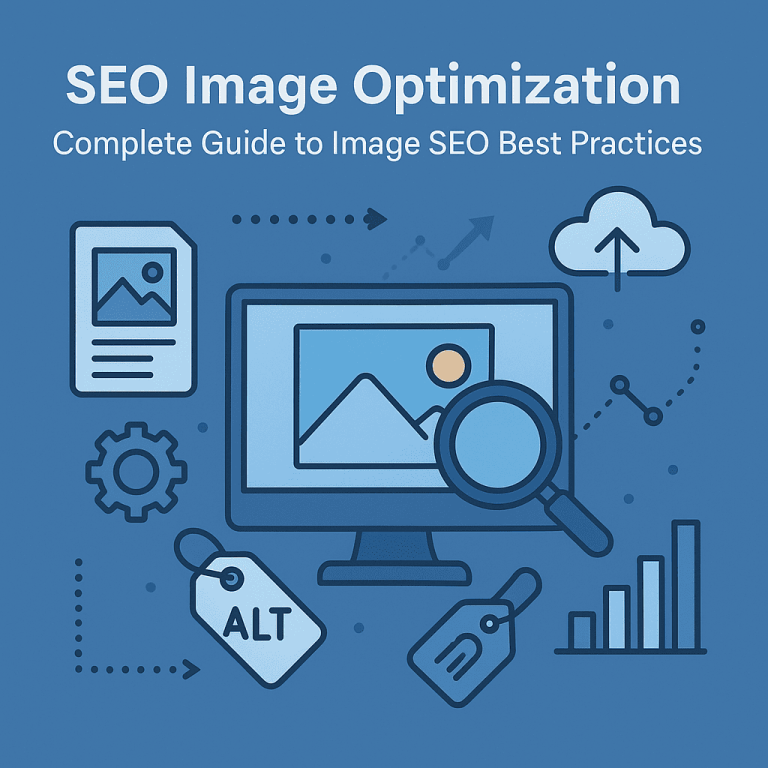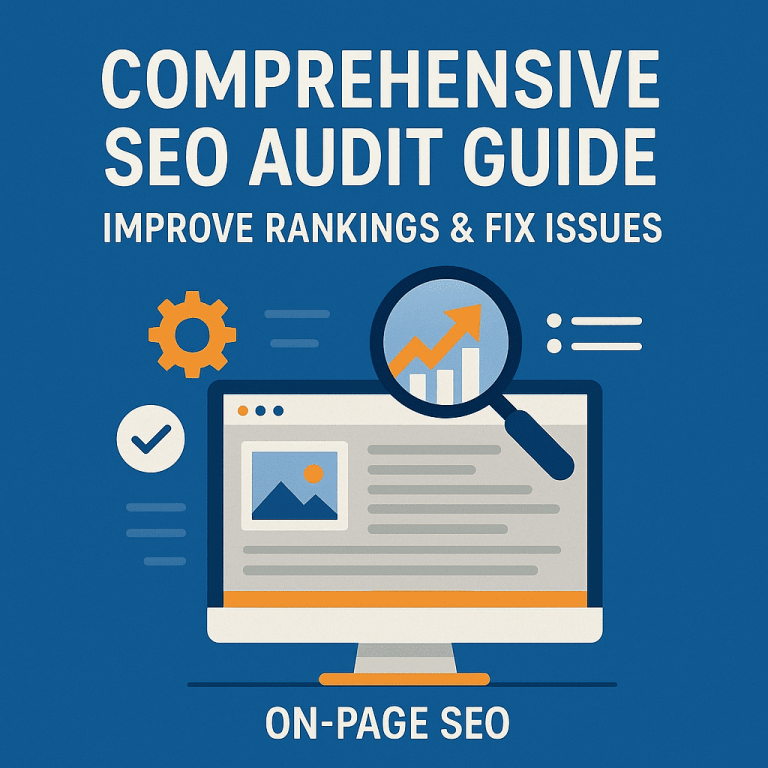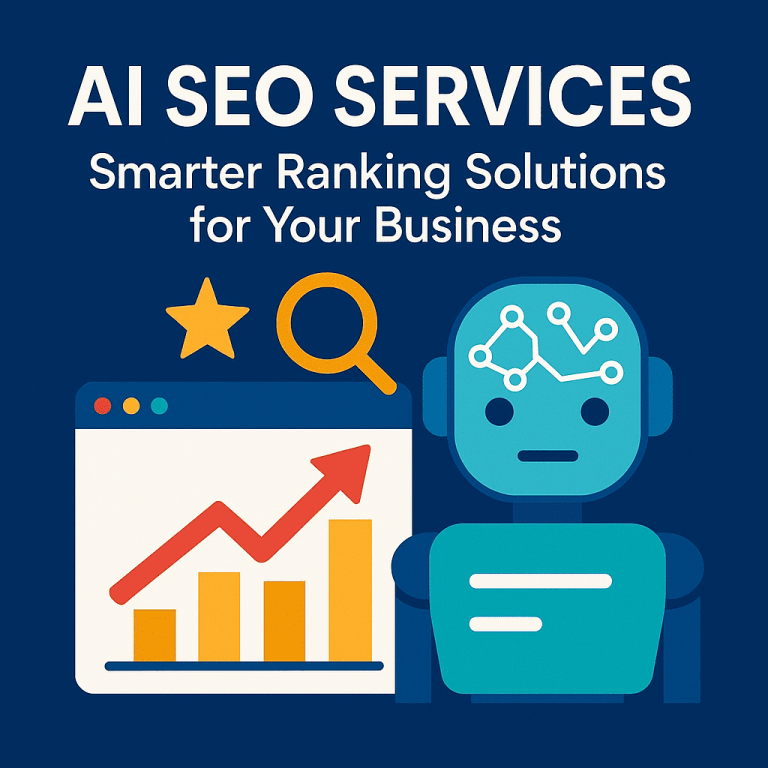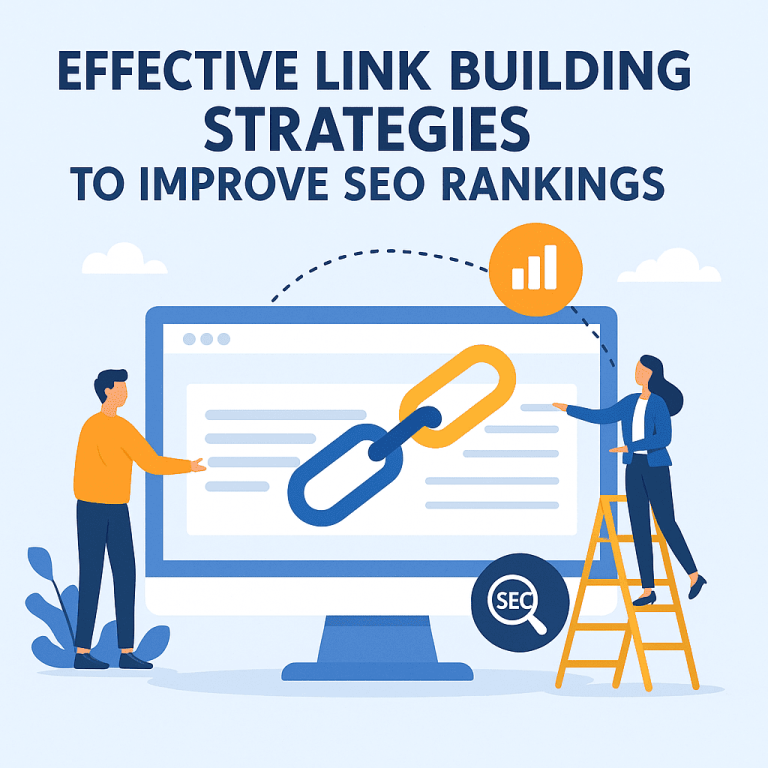Content Marketing for SEO: How to Drive More Organic Traffic
Introduction to Content Marketing for SEO
Content marketing and SEO share one common goal—helping a website earn attention, trust, and higher rankings in search results. Through valuable, informative, and keyword-focused content, we help businesses attract their target audience naturally. Instead of relying only on paid ads, well-planned content delivers consistent organic traffic that compounds over time.
Our goal as an SEO service agency is to connect strategic keyword research, engaging writing, and structured optimization. Content isn’t just text; it’s the foundation that supports every SEO element, from backlinks to user engagement. By aligning your content with user intent, you can establish topical authority and long-term credibility in your industry.
Why Content Marketing Matters for SEO
Content marketing plays a major role in determining how well your website ranks. Search engines rely heavily on context, relevance, and quality signals from your content to decide your ranking position. We use content to demonstrate expertise and answer search queries comprehensively.
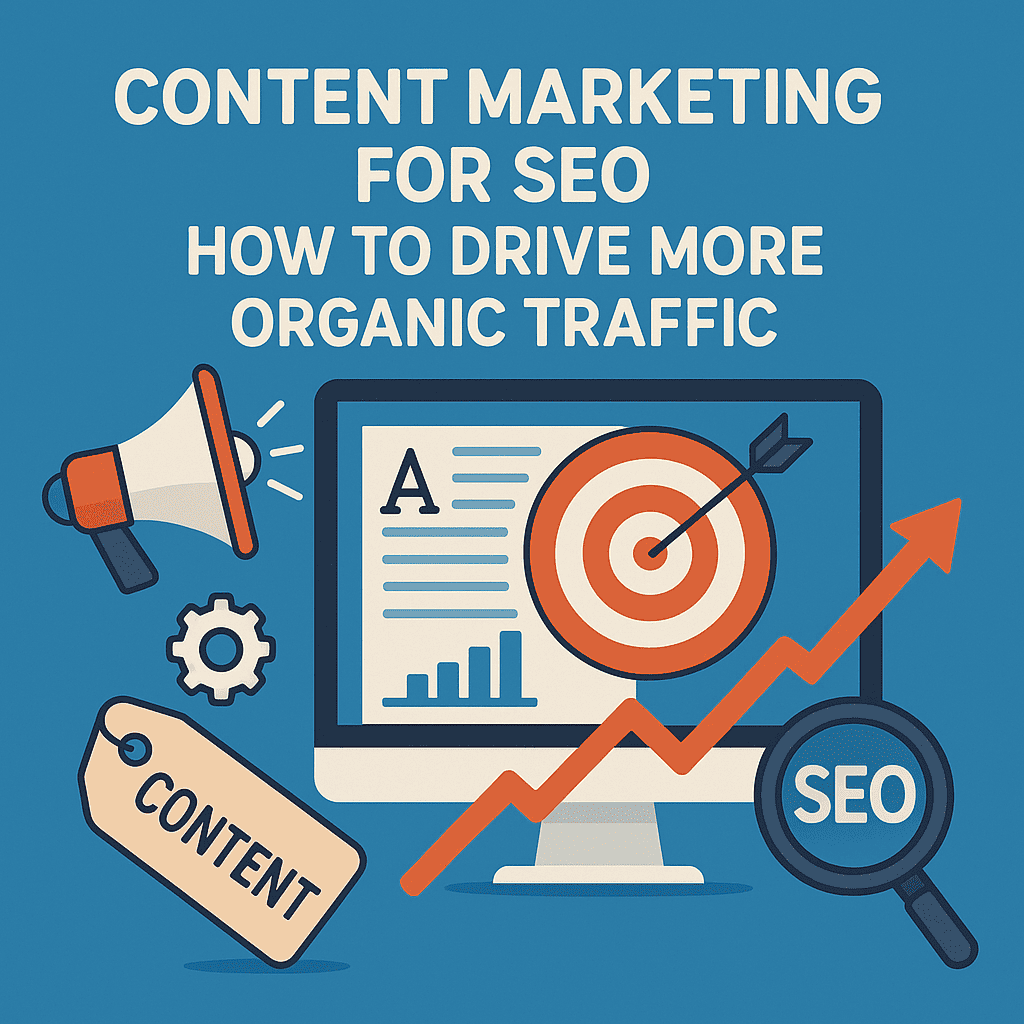
The more valuable your content is, the longer users stay, lowering bounce rates and increasing dwell time—two indicators that positively influence search ranking. Regularly publishing optimized content also keeps crawlers visiting your site, ensuring faster indexing and higher authority over time.
Keyword Research and Content Planning
Keyword research forms the backbone of every successful content marketing campaign. We focus on finding phrases that your audience actively searches for, including short-tail, long-tail, and question-based keywords. The goal is not just traffic, but targeted visitors who are ready to take action.
Our process starts with analyzing search intent—informational, navigational, or transactional. Then we categorize keywords into content types such as blog posts, guides, product pages, or service pages. Using tools like Ahrefs, SEMrush, and Google Keyword Planner, we assess difficulty levels and search volume.
Once keywords are finalized, we map them into a content calendar. This ensures consistency and proper coverage of every topic relevant to your niche. Planning content around data-driven keywords increases the likelihood of ranking multiple pages for varied search intents, improving the website’s overall authority.
Creating SEO-Friendly Blog Posts
Every well-optimized blog post begins with understanding the reader’s question. Our method combines creativity and SEO structure. A good blog post should inform, engage, and direct users toward a goal—like signing up, purchasing, or learning more.
We use descriptive H2 and H3 headings, break content into short paragraphs, and naturally include target keywords. We also emphasize readability through bullet points, visuals, and clear formatting. Each article should solve a problem, provide actionable guidance, or educate users.
We also include LSI (Latent Semantic Indexing) keywords, which help search engines grasp the context of your topic. Instead of repeating one term excessively, we use related words to strengthen topical relevance. This helps achieve a natural, user-friendly flow while maintaining strong SEO impact.
Using Topic Clusters and Internal Linking
Topic clusters are a proven way to organize content strategically. A pillar page covers a broad topic, while cluster articles address subtopics in detail. All pages link to one another, forming a network of internal relevance.
We apply this model to structure your content logically. For instance, if your pillar page is “Local SEO Services,” cluster articles might include “Google My Business Optimization,” “Local Citations,” and “NAP Consistency.” These internal links signal to search engines that your site is an authority on that subject.
Internal linking also enhances navigation and user engagement. It keeps readers exploring more of your site while distributing link equity across pages. This helps even newly published posts gain ranking potential faster.
Optimizing On-Page Elements (Titles, Meta, Alt Text)
On-page optimization ensures that every piece of content communicates clearly with both users and search engines. Titles, meta descriptions, and image alt texts are small yet powerful elements that define how your pages appear on search results.
We craft SEO titles that are concise, keyword-rich, and enticing. Meta descriptions summarize the article’s main idea and include a call-to-action to encourage clicks. Each image within the content is optimized with alt text describing what it represents, improving accessibility and image search ranking.
Headings (H1–H3) are structured logically to reflect content hierarchy. The first paragraph introduces the topic with the main keyword, while the conclusion includes a soft call-to-action or summary. These subtle refinements strengthen SEO signals and make your content more discoverable.
Content Promotion and Link Building
Creating great content is only half the battle—promotion amplifies its reach. We use multiple channels to distribute your articles strategically, driving backlinks, social engagement, and referral traffic.
Our promotion techniques include outreach to niche bloggers, submitting guest posts, leveraging industry forums, and sharing across LinkedIn, X (Twitter), and Facebook. We also encourage syndication on platforms like Medium or industry-specific directories to attract new readers.
Every share, mention, or backlink adds authority to your website. Link building through valuable content—not through spammy exchanges—remains one of the strongest ranking signals in SEO. When content naturally attracts backlinks, it demonstrates credibility and enhances organic growth.
Updating and Repurposing Old Content
Search intent and algorithms evolve constantly. That’s why we revisit older content to refresh and repurpose it. Updating includes revising outdated data, adding internal links to new posts, and enhancing keyword focus.
Repurposing means turning existing blog posts into new formats—videos, infographics, podcasts, or social media posts. This extends your content’s lifespan and helps reach different audience types.
We often analyze content performance to identify which articles still generate traffic and which need improvement. A content refresh can revive rankings, attract new backlinks, and maintain your site’s authority over time.
Measuring Content Marketing Success (Analytics, KPIs)
Without data, content marketing becomes guesswork. We rely on measurable KPIs (Key Performance Indicators) to evaluate progress. These metrics reflect how effectively content contributes to SEO performance.
Some of the main KPIs we track include:
- Organic Traffic: The total visitors from unpaid search results.
- Average Time on Page: Indicates engagement and relevance.
- Bounce Rate: Measures how quickly users leave the page.
- Conversion Rate: Shows how well content drives desired actions.
- Backlinks Earned: Reflects authority and trust.
- Keyword Rankings: Helps identify progress for target terms.
Tools like Google Analytics, Google Search Console, and Ahrefs help us monitor trends. Data insights guide our decisions—whether to adjust headlines, improve page layout, or expand content depth.
Our focus is continuous improvement. Each campaign is refined based on performance data, ensuring that your content investment delivers measurable ROI.
Common Mistakes to Avoid
Even experienced marketers can mismanage SEO content. Avoiding these common pitfalls ensures consistent progress and sustainable growth.
1. Ignoring Search Intent
Publishing content that doesn’t match what users are searching for can reduce rankings and engagement. We always confirm the intent—informational, navigational, or transactional—before writing.
2. Keyword Stuffing
Excessive use of keywords damages readability and may trigger search penalties. We maintain a natural keyword density, ensuring the text flows naturally.
3. Neglecting Internal Links
Forgetting to link relevant pages weakens the site’s internal structure. We always connect related posts to reinforce topic authority.
4. Using Generic Titles
Titles that lack clarity or keywords fail to attract clicks. We focus on actionable, descriptive titles that spark curiosity.
5. Overlooking Meta Descriptions
Meta descriptions influence click-through rates. Ignoring them means losing potential visitors. Every post deserves a unique and appealing meta description.
6. Failing to Refresh Content
Old, outdated articles lose ranking power. Regular updates show search engines that your site is active and reliable.
7. Ignoring Analytics
Without tracking data, improvement becomes impossible. We consistently evaluate KPIs to refine and strengthen our SEO campaigns.
How to Create a Sustainable Content Marketing System
Content marketing works best when it operates within a structured system. We implement a workflow that ensures quality and consistency:
- Research Phase: Identify keyword opportunities and analyze competitors.
- Planning Phase: Develop content outlines and publication schedules.
- Creation Phase: Write, edit, and optimize each article for SEO.
- Promotion Phase: Share content through social media, newsletters, and outreach.
- Performance Review: Track KPIs and make data-driven adjustments.
Repeating this system builds momentum and authority. Each new article strengthens the site’s topic coverage and interlinks with older content, forming a cohesive network that search engines favor.
The Role of Content in Link Acquisition
High-quality content acts as a magnet for backlinks. We focus on publishing linkable assets—resources so valuable that other websites reference them naturally. Examples include data studies, industry reports, infographics, or ultimate guides.
Instead of cold outreach campaigns, linkable content attracts attention organically. People share it because it adds genuine value. This method builds trust while improving rankings across multiple keywords.
When your site earns authoritative backlinks, your entire domain benefits. That’s the power of well-executed content marketing integrated with SEO principles.
Aligning Content Marketing with User Experience (UX)
Search engines reward websites that satisfy visitors. Great content must align with design, navigation, and user experience. We prioritize clarity—readable typography, engaging visuals, and fast-loading pages.
We also ensure that CTAs (Call-to-Actions) are relevant and non-intrusive. A smooth UX complements well-written content by encouraging users to explore further instead of leaving. Together, SEO and UX form a powerful combination for retention and conversion.
User feedback also plays a role. We often collect comments, reviews, or behavior data to refine how information is presented.
Evergreen vs. Trending Content
Balancing evergreen and trending topics is key to maintaining consistent traffic. Evergreen content covers timeless subjects—guides, FAQs, or tutorials that remain relevant year-round. Trending content focuses on new updates, technologies, or changes in your industry.
We recommend a mix of both. Evergreen content ensures stable traffic, while trending posts capture temporary surges and backlink opportunities. Updating evergreen posts periodically keeps them competitive and useful for long-term ranking.
Using Visual Content for SEO
Images, infographics, and videos improve engagement and retention. Search engines analyze how users interact with visuals, influencing SEO indirectly.
We optimize all visuals with descriptive filenames and alt text. Infographics are particularly effective for earning backlinks, as they simplify complex ideas into shareable visuals. Videos hosted on YouTube and embedded in blog posts can also capture additional search traffic.
Visuals not only attract users but also encourage shares across social media, extending content reach beyond search engines.
Voice Search and Semantic Optimization
With the rise of smart speakers and mobile assistants, voice search is now part of SEO content planning. Voice queries are conversational and often question-based.
We optimize content for natural language and featured snippets by using FAQ sections and concise answers. Semantic SEO plays a role here—understanding the relationship between words and meaning instead of exact-match keywords.
Voice-friendly content helps capture users searching hands-free, giving businesses an edge in emerging search behavior patterns.
Local Content Marketing for Regional SEO
Businesses targeting local audiences benefit greatly from localized content. We include region-specific keywords, case studies, and service pages to attract nearby customers.
Examples include publishing articles like “Best Restaurants in Toronto” or “Top Spa Services in Gulshan.” Such posts rank for geographically relevant searches and enhance local authority.
We also integrate Google Business Profile content updates, local schema markup, and customer reviews to strengthen local SEO outcomes.
E-A-T and Content Authority
Expertise, Authoritativeness, and Trustworthiness (E-A-T) remain essential signals in SEO. We craft content written by subject experts, backed by credible sources, and presented transparently.
Adding author bios, citing references, and showcasing credentials all contribute to higher E-A-T. For industries like health, finance, or legal, E-A-T can significantly influence ranking stability.
Establishing authority takes time, but consistent quality content supported by data-driven insights accelerates recognition in your field.
Content Distribution and Outreach Channels
Once content is published, strategic distribution ensures it reaches the right audience. We prioritize platforms based on relevance—LinkedIn for B2B, Pinterest for visuals, Reddit for discussions, and niche communities for expert sharing.
Email newsletters also serve as effective tools to drive returning traffic. Collaborating with influencers and guest contributors can further expand exposure.
Each distribution effort compounds reach, attracting new visitors and potential backlinks that reinforce your SEO growth cycle.
Tools We Use for Content Marketing and SEO
We rely on industry-grade tools to streamline every phase of content marketing:
- Ahrefs & SEMrush: Keyword tracking, backlink analysis, and competitor research.
- Google Analytics & Search Console: Performance monitoring and traffic analysis.
- Surfer SEO & Frase: Content scoring and semantic optimization.
- Grammarly & Hemingway: Grammar and readability checks.
- Canva & Adobe Express: Visual content creation for posts and social media.
Using these tools ensures precision in keyword usage, content structure, and performance measurement—turning creativity into measurable results.
Integrating Content with Other SEO Components
Content marketing doesn’t operate in isolation. We align it with technical SEO, link building, and user experience improvements.
For example, technical fixes like schema markup or XML sitemaps help search engines crawl your content efficiently. Off-page SEO, including quality backlinks, reinforces authority. On-page improvements like fast-loading pages and responsive design complement content performance.
When all components work together, your content not only ranks but also converts visitors into leads or customers effectively.
Building Trust with Educational Content
Educational articles, tutorials, and how-to guides help establish your brand as a trusted resource. Users prefer content that answers real problems instead of overt promotions.
We focus on teaching before selling, providing information that builds credibility first. Once trust is established, readers are more likely to take action—subscribe, contact, or purchase.
Trust-based content marketing drives long-term retention and strengthens word-of-mouth recommendations, both vital for sustainable growth.
Future Trends in Content Marketing for SEO
AI, automation, and predictive analytics are reshaping how we create and distribute content. Machine learning tools now help us understand user intent at deeper levels and personalize recommendations.
We anticipate even stronger integration between content and data-driven SEO decisions. Voice, video, and interactive formats will dominate engagement, requiring adaptable strategies.
Despite evolving trends, the core principle remains—deliver genuine value to readers. Quality, relevance, and authenticity will always outweigh shortcuts or automation tricks.
SEO Supremacy’s Content Marketing Services
At SEO Supremacy, we specialize in content-driven SEO strategies that help businesses achieve measurable growth. Our team combines keyword expertise, engaging writing, and technical precision to create content that ranks and converts.
We plan, write, optimize, and promote content that positions your brand as an authority in your field. Whether you need blog management, keyword strategy, or full-scale SEO campaigns, we’re here to help your website attract consistent organic traffic.
